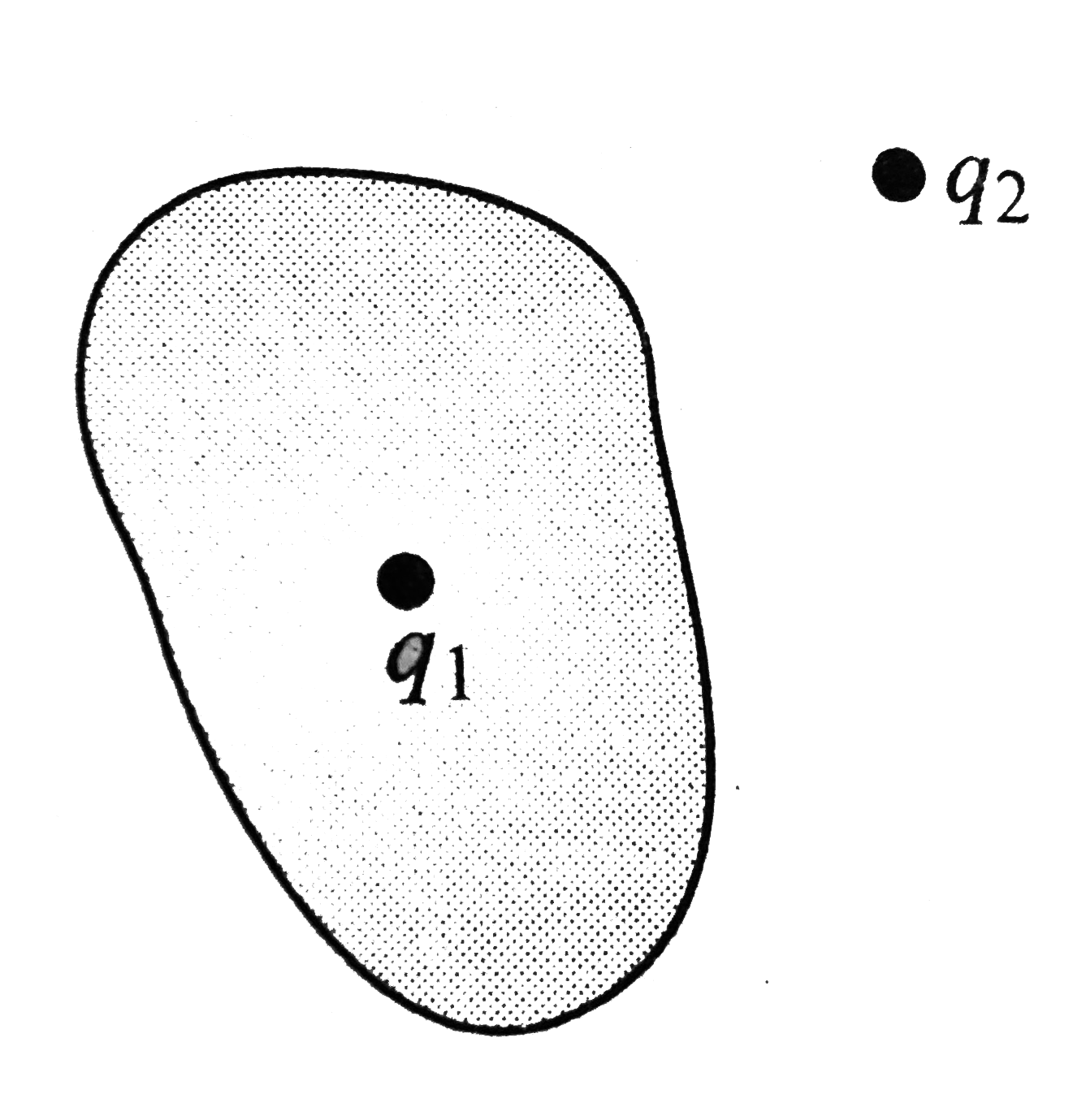For a given surface the Gauss's law is stated as∮→E.d→A=0. From this we can conclude that Solution in Kannada
E is necessarily zero on the surface
The total flux, through the surface, is zero
E is perpendicular to the surface at every point
The flux is only going out of the surface
The correct Answer is:B
Step by step video, text & image solution for For a given surface the Gauss's law is stated asoint vecE.dvecA=0. From this we can conclude that by Physics experts to help you in doubts & scoring excellent marks in Class 12 exams.
Updated on:21/07/2023Topper's Solved these Questions
Similar Questions
A convex lens has mean focal length of 15 cm. The dispersive power of the material of prism is 0.01. What is the longitudinal chromatic aberration for the lens ?
View SolutionWhy the amount of light emitted by the fluorescent tubes is much larger as compared to the filament lamps ?
View SolutionConsider Gauss's law
∮→E⋅→ds=qε0
Then, for the situation shown in figure at the Gaussian surface

View SolutionAssertion: Column's law can be derived from Gauss's law.
Reason: Gauss's law can be derived from Coulombs law.
View SolutionState Gauss's Theorem in electrostatics and deduce coulomb's law from Gauss's theorem.
View SolutionFor a given surface the Gauss's law is stated as oint vecE.dvecA=0 . From this we can conclude that
View SolutionBy Gauss's law for a given surface oint E.ds = 0 from where it can be concluded that
View SolutionState Gauss's Law ?
View SolutionFor a given surface the Gauss.s Law is stated as ∮E.ds=0. From this we can conclude that:
View SolutionFor a given surface the Gauss's Law is stated as oint E.ds=0 . From this we can conclude that :
View SolutionFor a given surface the Gauss's law is stated as∮→E.d→A=0. From this we can conclude that
View SolutionState Gauss's law for magnetism.
View SolutionState Gauss's Law of electrostatics.
View SolutionState Gauss's law.
View SolutionState Gauss's law for magnetism.
View SolutionConsider Gauss's law
∮→E⋅→ds=qε0
Then, for the situation shown in figure at the Gaussian surface

View Solution

